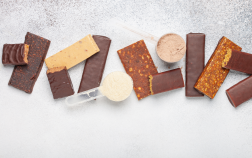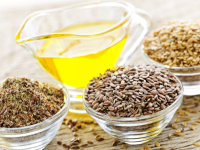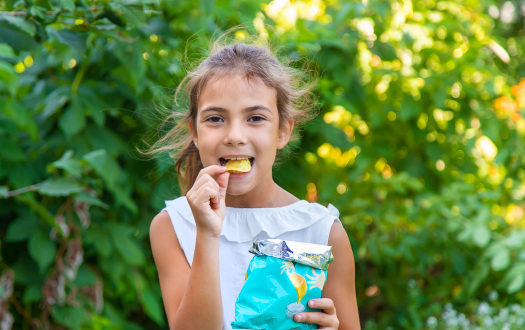
J. David Legan, PhD
Director of Science
David earned his Ph.D. in Food Technology from the University of Reading in the UK by modeling the ecology of mixed microbial populations, and then moved to Campden BRI in a variety of microbiological food safety research and client service roles. During that time, he was project lead for the Bacillus component of the UK’s pathogen modeling program. He moved again to Nabisco Research in New Jersey where he ran the corporate microbiology lab and developed a program of preservation technology development and microbial modeling. After the Kraft Foods acquisition, he moved to Chicago to work on Food Safety and Preservation research, and through modeling and validation studies:
- Optimized Oscar Mayer’s use of lactate and diacetate and their naturally cultured alternatives as Listeria-control agents in Ready to Eat meats
- Specified process conditions central to Oscar Mayer’s commercial launch of High Pressure Pasteurization of naturally cured RTE meats
David had responsibility for the Kraft cultures R&D group, developed a partnership to explore microwave sterilization leading to several patents, and led a program that developed an internal proprietary natural antimicrobial commercialized in several Kraft products. Technologies from his group supported approximately $4 billion in annual sales.
After years as a microbiology "client", he is now back in the "provider" role as Director of Science at Eurofins Microbiology Laboratories, Inc., by way of the Covance Food Solutions group based in Madison, WI, which he joined in 2016. In this role, he ensures appropriate method validation, explores new testing technologies, and fields multiple complicated food microbiology questions.
Products that his team has evaluated or developed and launched include:
- The 3M MDS platform in the Madison microbiology laboratory
- Flow cytometry for enumeration of probiotics
- Strain-level confirmation of probiotic identification using the polymerase chain reaction (PCR)
- Next-generation sequencing using the Oxford Nanopore Technologies GridION sequencing platform for microbial identification and microbiome analysis
Below are resources from David:
The bar aisle is brimming with possibilities—and today’s consumers are more curious and discerning than ever. As expectations rise around flavor, texture, and ingredient transparency, brands have a unique chance to reimagine what a bar can be. This webinar explores the dynamic evolution of the bar category, especially protein bars, and reveals how thoughtful innovation can help your brand rise above the noise and truly connect with consumers. Originally Aired on November 5, 2025
After months of fine-tuning flavor, texture, and active ingredients, a new nutritional formula was ready for scale-up. This case study explores the successful transition from lab-scale to full-scale production—preserving product integrity across thousands of gallons.
Discover how GLP-1 medications are reshaping consumer behavior and driving innovation in food, beverage, and supplement industries , ushering in the “smaller-appetite era” of nutrition and wellness.
Explore why technical diligence is critical in food & beverage M&A. Learn how Eurofins helps private equity firms assess scalability, supply chain stability, and innovation pipelines to reduce risk and drive growth.
With the overall market movement towards "better for you" foods, many companies have already started adding new or reformulated products to their portfolios. Click to read our blog about the market action being taken and strategies companies have deployed to appeal to the Make America Healthy Again movement.
Discover how Eurofins Product Development & Innovation helps private equity firms turn promising food & beverage startups into scalable, profitable brands through technical expertise, consumer insight, and product development rigor.
In the initial MAHA report, ultra processed foods (UPFs) took center stage due to their lack of nutrient value, high caloric nature, and inclusion of suspect ingredients. Among those suspect ingredients, the MAHA commission has highlight seed oils. In this blog, we help give clarity on how food companies can look at seed oil inclusion in their products.
With growing scrutiny from lawmakers and public health advocates, the once-standard GRAS (Generally Recognized as Safe) process may be on the verge of a major overhaul. In this blog, we break down what GRAS really means, why the self-affirmed process has sparked concern, and how the proposed legislation could redefine the future of ingredient approval in the U.S. food system.
With the release of the Make America Healthy Again (MAHA) report, the food and supplement industries are facing a pivotal moment. Join two of our leading experts as they unpack the report’s findings and explore what they could mean for consumer-packaged goods (CPG) companies. From reformulation strategies to enhanced ingredient scrutiny, this session will help industry professionals prepare for a wave of potential changes. Originally Recorded on August 21, 2025
At Eurofins Nutrition Analysis Center, we highlight the critical role of texture analysis in pet food quality. This video explains how texture analysis quantifies product consistency and provides valuable insights into performance across the supply chain from R&D to addressing customer complaints.












